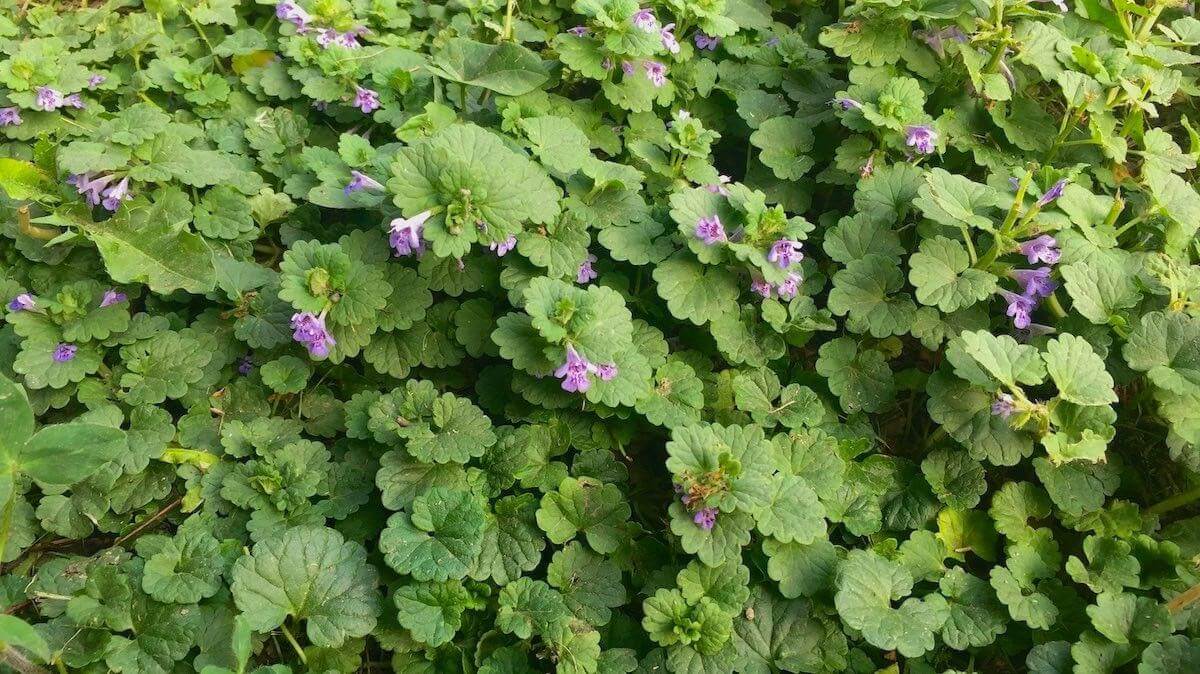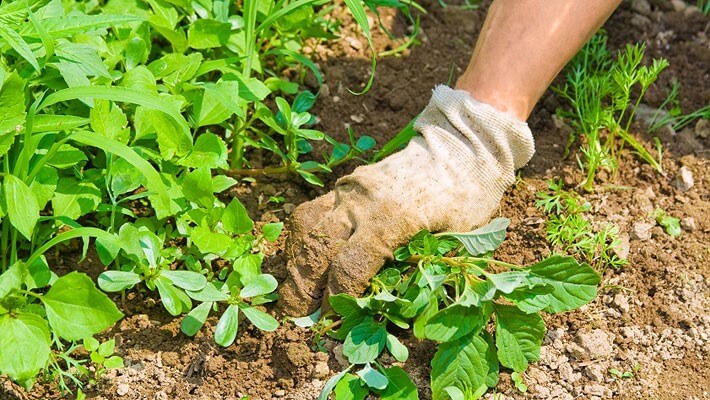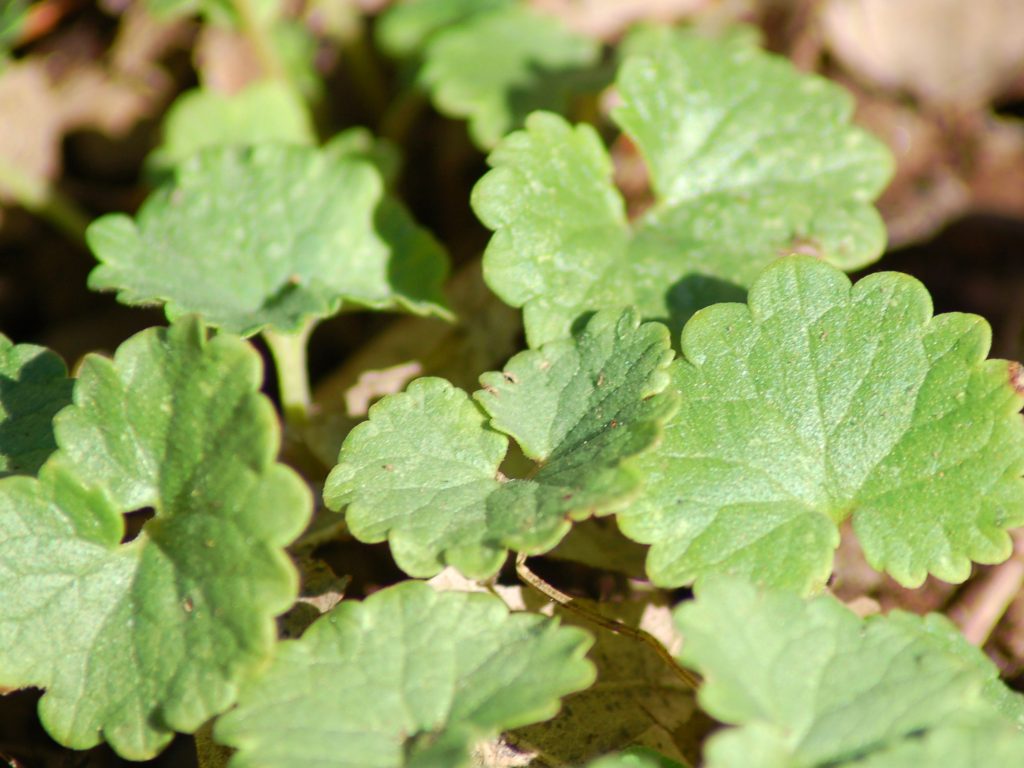You might have an image of your lawn in your mind and must have worked hard for it and even paid large amounts to get hold of the things required to make that happen, and then you are stuck with a weed that keeps coming back every time you cut.
It becomes a difficult task to cut the lawn now and then as it is difficult to prevent the Creeping Charlie from coming back and taking over your lawns and turf with a large amount and density of leaves, its purple flowers and green color that covers the entire lawn keeping no space for anything else.
As they called it ground ivy, Creeping Charlie is a weed that majorly grows as a groundcover. The weed grows in shady areas that receive minimal sunlight. But as the creeping Charlie has prolific seeds and stems that majorly grow roots, the plant spreads all through your lawn along with the place from where it is planted.
People plan and plant the weed at certain places like baskets or around the lawn. Still, the weed always finds a way to spread through the desired place, and there comes a day when all you can see is the creeping Charlie all over your place, and all the other plants, trees, and grass of your lawn are long lost in the green, dense, weed growing unnecessarily.
How to Identify Creeping Charlie?
Creeping Charlie is not a name of one plant of weed type, but several weeds grow similarly across various lands collectively known as creeping Charlie. But the plant that causes a significant mess in the individual’s garden is called Glechoma hederacea.
Creeping Charlie is a weed that is very close to the mint family as it has a similar type of growth and leaves. Further, just like mint leaves, the creeping Charlie also has a robust and minty odor, and the smell gets better as you crush the leaves. Hence, if you are someone who has touched or used or eaten mint leaves, it is likely that you recognize creeping Charlie as quickly as it is.
Moreover, the weed is green in color and has round and kidney-shaped leaves. The stems of these weeds have thick nature, and they take the form of a carpet-like mat that is spread over the floor, which has a green color.
A variation of creeping Charlie has similar kind of [properties, but it comes in pale green leaves with a white tip and edges. A few months of the year, especially the spring season, give the Charlie funnel-shaped blue and purple flowers. Whether you like it or not, you will see the Charlie once every year covering your space, not leaving space for even the grass.
Europeans introduced creeping Charlie across several places where nothing else would grow. Creeping Charlie would make a great bed under the tree shadow in the 17th century, especially when there was little scope for anything else to grow. A few centuries later, creeping Charlie was known to be an invasive weed and was officially declared to be the same.
Regions like Connecticut even ban the growing of creeping Charlie. The Creeping Charlie is barely prone to any pests and diseases. Neither the goats nor other animals would choose to eat these weeds because having a stomach full of creeping Charlie would make these animals sick or even fatal at times.
How to Get Rid of Creeping Charlie?

Hand-Pulling Method of Getting Rid of The Creeping Charlie
On the off chance that the creeping Charlie you have focused on for killing is close to edible plants, or if kids or pets play close by, one may not be able to shower it with modernly delivered herbicides or weed executioner and hence must make use of other techniques to get rid of these weeds from your lawn.
Glyphosate, the dynamic chemical in numerous famous weed executioners, has been connected to cancer. Hence, if you are cautious or sensitive about these chemicals’ harmful effects, it will be a better option for you to pull them off by your hands.
You can pull them out whenever you see them while watering the plants and trees or planning for a function in your backyard. You can haul Charlie out by hand. No synthetic substances are required. Indeed, you can do this. You’ll require time, muscle, and a promise to planting reasonably. Here’s how you do it:
Before Pulling Out, Trim the Weed as Per Your Capacity So That Pulling with Your Hand Does Not Require Much Strength
Pack up the decorations and first make sure you toss them in your manure heap IF you realize your fertilizer gets sufficiently hot to kill weed seeds, or otherwise, you can always throw them in a garbage bin. It is not suggested to leave them on the ground. In case you leave them, they will develop roots from the stems and set up an entirely different fix for Charlie.
Drench the Dirt.
Utilize your garden hose to soak the dirt around the creeping Charlie. Keep the water for an hour. You need the water to relax the roots’ grasp on the dirt, so it’s simpler for you to haul the roots out without severing them in the ground.
Make Sure You Remove All the Dirt with A Pitchfork
Take a pitchfork and delicately lift forkfuls of soil that will uncover the roots and rhizomes of Charlie.
Pull the Weed with Your Hands

Clutch each Charlie plant at its base and haul it out of the soil, gradually yet solidly, to eliminate the roots with the plant. For the firm and dense roots, make use of a pitchfork so that you get the plant and roots in a single draw.
Put the plant in that sack with the decorations. Not to underestimate the reality that how to fit you are getting doing this exercise of squatting and pulling out the weed.
Check Carefully for The Small Bits of Weeds That You May Have Missed
Make sure you do not miss on any of the plants or leave or root as the creeping Charlie would take the support of that root and come back at the same place just in a matter of 4 to 5 weeks, making you do the same kind of stuff again to get rid of the weed.
Utilize a scoop or weeding fork and look around in the dirt to search out leftover roots or plants. Ensure you are super careful to avoid the efforts and have a beautiful, well-planned garden around your house.
Repeat the Procedure In A Few Weeks
You may miss on to several roots even if you make sure to remove all of them carefully. Check for patches individually, and pull up new creeping Charlie plants by the roots when you see them. Even if hand-pulling weeds might come as a tiring and lengthy process, it is undoubtedly eco-friendly. It will two or three hand pulling to remove the Charlie from roots.
Making Use of Herbicides to Get Rid of Creeping Charlie

If the creeping Charlie growing in your lawn is too large and dense to pull out by hand, you can always opt for an option that requires chemicals.
You can utilize an item that slaughters each plant nearby and afterward begins once again without preparation and replication. You can then splash the creeping Charlie with a yard-friendly item, like a broadleaf herbicide.
If you are someone who does not have any kids or pets playing in their yard and are just determined to get rid of the creeping Charlie due to the spoilage of your garden’s looks, this is an excellent solution for you.
Adhere to directions are mentioned on the herbicide, yet here are a few hints on the most proficient method to slaughter creeping Charlie:
- The best ideal opportunity to splash weed executioner on Charlie is in the fall after the primary frost, as the weed is in its initial stages of growth; hence, they are weak and mild, which makes it easier to kill the weed.
- Pick a day with no air, wind, or rain, so the weed executioner does not blow onto plants you need, and if such things happen, it may hurt your other plant, or even that may die.
- Ensure you splash it on the days when there are no rain 24 hours after you splash.
- After you have splashed the zone, keep it the way it is, especially in the winters. The creeping Charlie will die, and its underlying foundations will compost into the dirt.
- In the spring, you can make use of dead plant parts and plant something you like.
How to Avoid the Emergence of Creeping Charlie In Your Backyard?
A healthy and well-maintained lawn is an effective defense for Charlie as weeds are the ones who take over the entire lawn and do not give any space for the plants and grass to exist. Here’s what to do to help keep creeping Charlie from reappearing:
Make Efforts to Increase the Volume of Grass
A high-density grass may help avoid the growth of creeping Charlie or any other weeds in your backyard as the massive volume of grass can outgrow the weed and avoid giving sunlight for germination of the weed.
Plant Those Trees That Will Grow Tall in The Future
The tall trees and grass growing in your garden in the soil are likely to bock the necessary sunlight due to its massive structure that weeds need to germinate, hence, no sunlight, no germination of the weed in the soil.
Overseed Annually
A dense lawn will not allow the weed to grow naturally as it will occupy plenty of space and not leave any space for the weed.
Occupy the Empty Spots in Your Lawn
Empty spaces in your garden are a significant reason why the weeds are going to grow. Hence if you cover those spots by planting more trees, the spots will be taken, and there will be no space for the weed to grow. Other aspects that can create a space include heavy foot traffic, drought, grubs, or disease.
Positives of Creeping Charlie
Not everything about a creepy Charlie is creepy. It is also beneficial for the human race up to some extent.
- If the creeping Charlie is maintained well, kept under control, and cut before dense growth, it can indeed be harnessed for good.
- As unbelievable as it may sound, Creeping Charlie can be eaten raw. As mentioned previously, in comparison with mint, Charlie’s young leaves have a mild mint flavor. These leaves are helpful in salads or any other dishes as they are delicious.
- Further, along with eating the vegetables raw, the weed can also be cooked like spinach and added to soups and omelets just like any other leafy vegetable. Also, it is used for making tea.
- It is a decent grass substitute. In case you are searching for an eco-friendly, low-support choice to turf grass in an obscure zone, creeping Charlie is a decent decision. It fills in thick tangles you will not have to cut. However, there are noninvasive groundcovers that are better decisions for turf substitutes.
- Pollinators like it. Creeping Charlie’s blossoms produce nectar in the spring and late spring, cherished by honeybees and butterflies. Your weed is their food.
- It is helpful for disintegration control. Creeping Charlie fills in obscure conditions in the soil, so if you have a territory inclined to waste time, creeping Charlie can keep the dirt in its place.
Conclusion
If the weed bothers you because of how dense it makes your garden look, how it hides your plants and trees, or how it has grown away from where it should be, there are always ways to get rid of it.

